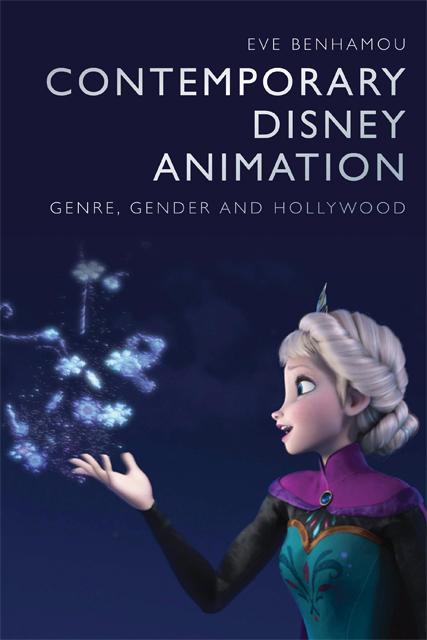6 - Disruption/Containment: Gender, Marvel and Disney’s Superheroes
Published online by Cambridge University Press: 14 July 2023
Summary
Look, the code may say I’m a princess, but I know who I really am, Ralph, I’m a racer with the greatest superpower ever! (Vanellope in Wreck-It Ralph, Rich Moore, 2012)
At the end of Wreck-It Ralph, Vanellope is revealed as the ‘Rightful Ruler’ of the kart-racing game ‘Sugar Rush’. While she had been marginalised and excluded from racing, her crossing of the finish line resets the game, and the other characters finally remember that she is a princess. This restored status is conveyed through the magical appearance of a pink sparkling dress and a crown, which she quickly discards. She then excitedly ‘glitches’ around, quickly appearing and disappearing throughout the frame. This short scene encapsulates the central generic influences characterising the portrayal of Disney’s contemporary animated characters. Vanellope shifts from the fairy tale (‘princess’) – the iconic underpinning of the Disney formula – to the action-adventure mode (‘racer’) and a genre more unusual for the studio: the superhero film (‘superpower’).
This chapter explores how Wreck-It Ralph, Frozen (Chris Buck and Jennifer Lee, 2013), Big Hero 6 (Don Hall and Chris Williams, 2014) and Moana (Ron Clements and John Musker, 2016) reappropriate and rework constructions of gender characteristic of the superhero genre, revising and expanding Disney’s gendered formula in the process. Disney animated films rely on the comic potentials and aesthetic freedoms of the animated medium to challenge contemporary portrayals of superheroes and superheroines. This distinctive animated prism reveals, and at times magnifies, contrasts between male and female characters’ exertion of their extraordinary powers and heroic feats.
By the late 2000s, the superhero genre was becoming ‘undeniably dominant’ within mainstream action-adventure cinema (Brown 2017: 1): the first X-Men trilogy (2000, 2003, 2006) and Sam Raimi’s Spider-Man trilogy (2002, 2004, 2007) had enjoyed significant success, while Christopher Nolan’s Batman films (2005, 2008) and Pixar’s The Incredibles (Brad Bird, 2004) also received widespread critical acclaim. Films based on Marvel comic books have been ‘at the forefront of this trend’ (Kent 2021: 2), which spectacularly grew with the first phase of the Marvel Cinematic Universe, launched in 2008 with Iron Man (Jon Favreau) and The Incredible Hulk (Louis Leterrier).
- Type
- Chapter
- Information
- Contemporary Disney AnimationGenre, Gender and Hollywood, pp. 150 - 179Publisher: Edinburgh University PressPrint publication year: 2022



